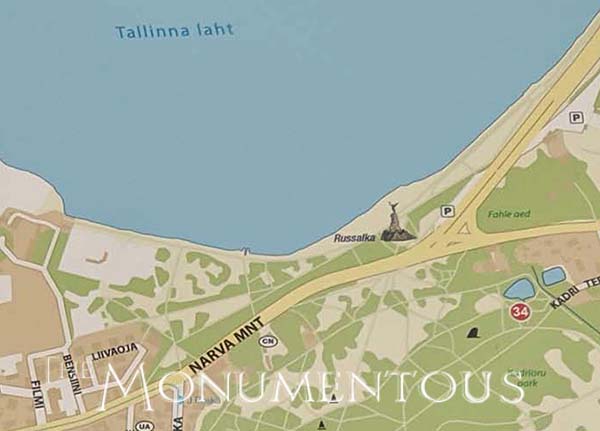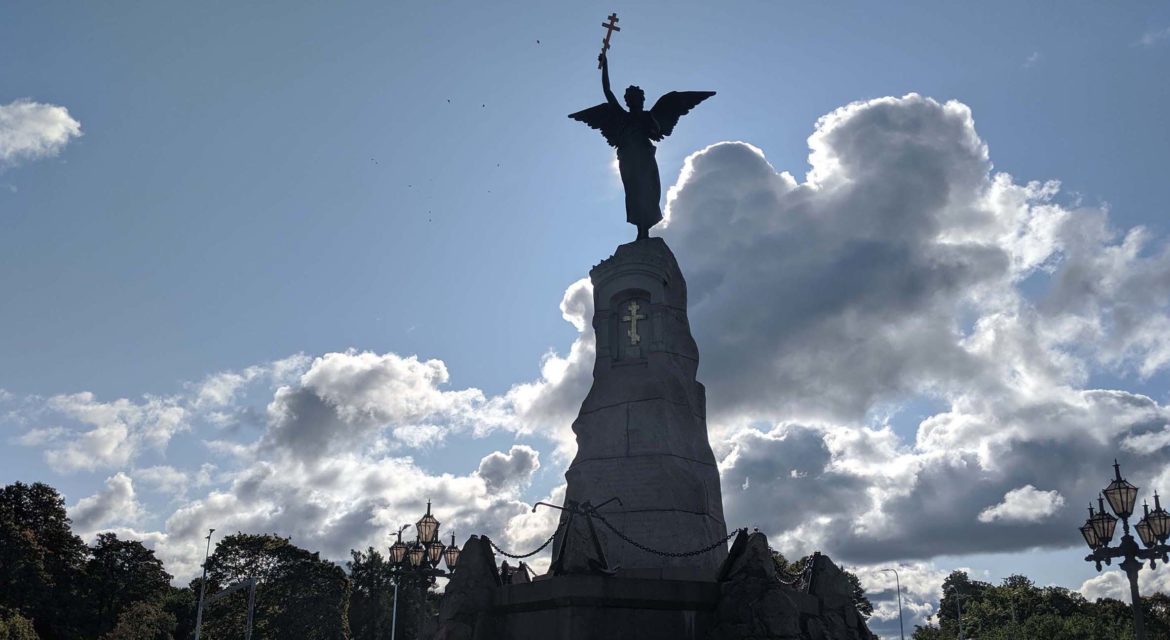 The Russalka Memorial (Estonian: Russalka mälestussammas) is a bronze memorial monument located in Tallinn, Estonia. Created to honor the memory of all the sailors who died when the warship Rusalka was lost at sea en route to Finland in 1893, it depicts an angel on a pedestal that faces the water. The memorial has become a landmark that means something important to residents while also attracting visitors from across the area.
The Russalka Memorial (Estonian: Russalka mälestussammas) is a bronze memorial monument located in Tallinn, Estonia. Created to honor the memory of all the sailors who died when the warship Rusalka was lost at sea en route to Finland in 1893, it depicts an angel on a pedestal that faces the water. The memorial has become a landmark that means something important to residents while also attracting visitors from across the area.

Memorializing a Tragedy at Sea
 The Russian warship Rusalka, or “Mermaid”, was one of two Charodeika-class monitors built for the Imperial Russian Navy in the 1860s. The ship had an uneventful career, but tragedy struck on September 7, 1893. The battleship entered Helsinki, but ran into heavy weather and sank with the crew of 177 seamen. No trace of the monitor was found and extensive searches of the sea bottom also failed to locate the ship. It was finally discovered in 2003, although these remains have not been moved since it considered it to be a burial place of seamen.
The Russian warship Rusalka, or “Mermaid”, was one of two Charodeika-class monitors built for the Imperial Russian Navy in the 1860s. The ship had an uneventful career, but tragedy struck on September 7, 1893. The battleship entered Helsinki, but ran into heavy weather and sank with the crew of 177 seamen. No trace of the monitor was found and extensive searches of the sea bottom also failed to locate the ship. It was finally discovered in 2003, although these remains have not been moved since it considered it to be a burial place of seamen.
To mark the ninth anniversary of the sinking of the Rusalka, Estonian sculptor and painter Amandus Adamson was commissioned to create the Russalka Memorial. Erected on 7 September 1902 in the Kadriorg subdistrict of Tallinn, the piece depicts a bronze angel on a granite pillar pointing an Orthodox cross in the assumed direction of the sunken ship. The area surrounding the monument is paved with granite that depicts a compass along with various words and messages that honor the people who died in the accident.
Placed by the sea where the promenade from Kadriorg Palace meets the Bay of Tallinn, the Russalka Memorial has had a notable impact on the culture and identity of the city for both residents and visitors.

Interaction and Revitalization
 Visitors to the Russalka Memorial are able to get up close and personal with the 16-meter sculpture, as they can walk right up to and around the granite base. The piece invites viewers to interact with it in a way that few memorials have enabled, and that interaction has helped it to have a wider impact on the economy and culture of the entire area.
Visitors to the Russalka Memorial are able to get up close and personal with the 16-meter sculpture, as they can walk right up to and around the granite base. The piece invites viewers to interact with it in a way that few memorials have enabled, and that interaction has helped it to have a wider impact on the economy and culture of the entire area.
The Russalka Memorial is featured in various products that represent Tallinn as well as in maps of the city. Some consider it to be a Tallinn landmark to the point that it has become a traditional spot for Russian couples to lay flowers on their wedding day. That impact is driving how it’s helped to revitalize the entire area.
A brand new, €41 million road on the Tallinn seafront provides a direct link from the Russalka intersection on Pirita Road to the city’s passenger port. Over 14 kilometers of walkways, pedestrian roads and bicycle roads along with two kilometers of roads for vehicular traffic have totally transformed the area for the better.
Like other memorials that have become icons or helped to drive the revitalization of an entire area, the Russalka Memorial illustrates what’s possible when a monument can help define the appeal and identity of an entire city.

More than a Memorial
 While the Russalka Memorial was erected to mark the ninth anniversary of the sinking of the Rusalka, it has come to represent so much more than that to the Kadriorg subdistrict and the city of Tallinn. The identity it has helped to define for both has had a profound and positive impact on the region which will allow the piece to create a whole new legacy for all of Tallinn.
While the Russalka Memorial was erected to mark the ninth anniversary of the sinking of the Rusalka, it has come to represent so much more than that to the Kadriorg subdistrict and the city of Tallinn. The identity it has helped to define for both has had a profound and positive impact on the region which will allow the piece to create a whole new legacy for all of Tallinn.

